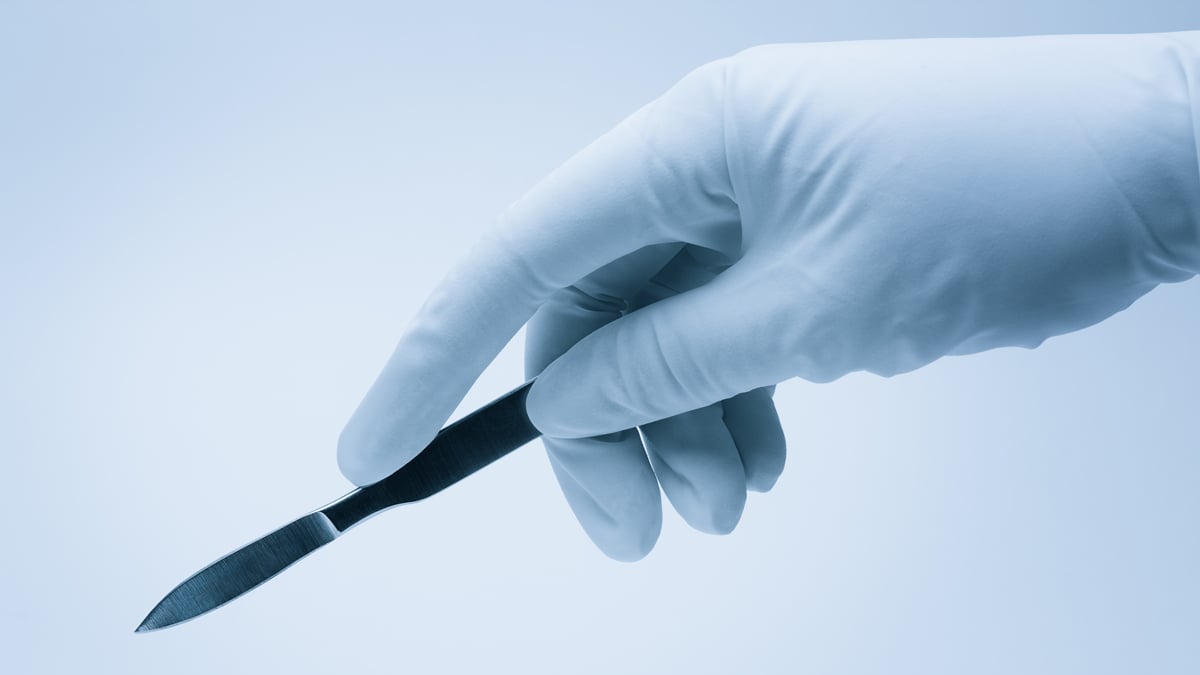Last Updated on June 22, 2022 by Laura Turner
Hand surgeons are specialists who complete a residency in either orthopaedic surgery, plastic surgery, or general surgery and then go on to additional competency training in hand and upper extremity surgery.
Hand Surgery Training
Orthopaedic surgery residency training is five years, focused on the care of patients who have trauma or diseases of the musculoskeletal system from the neck down. Bone plates and screws, intramedullary nails, joint replacement, fracture treatment, amputations, and spine surgery are typical procedures for an orthopaedic surgeon. Plastic surgery can be 6 or 7 years of training (depending on if it is combined with general surgery) and is more focused on soft tissue reconstruction, although some training in bone surgery is typically included. Plastic surgery also includes cosmetic surgery, craniofacial, and burn care. Some surgical residents take an extra year to do clinical or laboratory research during residency.
As a resident, and then more intensely as a fellow in hand and upper extremity surgery, the anatomy from the neck to the fingertips is rigorously studied. The training is focused on how to treat patients with conditions such as trauma, lacerations, infections, bone fractures or deformities, tendons, arteries, peripheral nerves, and congenital hand and limb differences.
What Hand Surgeons Treat
Hand surgeons are more versatile than some other specialists as they typically can repair arteries, bones, nerves, tendons, muscles, fingernails, and skin. Common conditions a hand surgeon may take care of in their practice would be carpal tunnel syndrome and distal radius fractures (wrist fractures). Hand surgeons are typically also comfortable operating on the lower limb as well as the rest of the body for reconstructive procedures, graft harvest using microsurgical or soft tissue transfer, or flap coverage.
Most hand surgeons operate using loupe magnification (extra eyeglasses to see in more detail) and some study how to operate under a microscope. Because they are operating under magnification and the hand is positioned out to the side in most procedures, hand surgeons are most often sitting, not standing, for surgery. To become a hand surgeon, dexterity, depth perception, and hand-eye coordination are either your natural skill set or you are excited and willing to put in the time to master those abilities. Hand surgeons are navigating some pretty tight anatomical situations on most days, nanometers from major vessels and nerves at all times. At some point, as a hand surgeon, you will cut one and have complications. Surgeries can fail to relieve pain, cause infections, or cause loss of function or physical deformity to your patient. Sage advice is to chose to be a hand surgeon in full knowledge of what can go wrong in addition to all the good you will do every day for your patients.
Traits of a Hand Surgeon
Hand surgeons have a reputation for being “chronically curious” individuals who enjoy attention to detail. There is a lot of time spent carefully in diagnosis, taking patient histories, listening to patient goals, meticulous surgical dissections, and decision-making between the many ways to perform each type of surgery. Even with such a precise and thorough bedside manner, hand surgeons tend to have very busy clinics, practices, and operating rooms. On average, most hand surgeons will see 50 or more patients in a day of clinic and perform 10 or more surgeries per week. Hand surgeons rely on occupational therapists, often with a subspecialized training of Certified Hand Therapy (CHT), who help in the rehabilitation of the form and function including making splints or helping patients gain back strength. To run a high-volume practice and work with the entire team that makes the care of these patients possible, hand surgeons become somewhat of a team captain and group leader.
The human hand itself is a fascinating instrument, and returning patients to a form and function that allows them to be without pain and back to work or play is a truly satisfying career choice. To be a hand surgeon you must feel empathy and understanding for your patients and be inspired and motivated to work with them toward the goal of treatment and recovery. Patients are often in pain and have lost independence or the ability to perform at the level they used to prior to injury. Patients experience a significant loss of independence and participation when their upper limb is injured or painful. Some patients will be evaluated for disability social security benefits or workers’ compensation. Children may need hand surgery if they have benign or malignant tumors, or if they are injured or born with congenital differences that limit function such as webbed fingers (syndactyly), too many fingers (polydactyly), or no thumb (hypoplasia). Athletes of all sports, musicians, artists, and students can have overuse injuries or trauma.
The Hand Surgery Network
The American Society for Surgery of the Hand (ASSH) has more than 5,000 members who meet annually to discuss outcomes, debate treatment options and ensure delivery of high quality of care nationally. The Journal of Hand Surgery is published monthly by ASSH, and several other journals (including those based more on plastic surgery or microsurgery topics) will include hand surgery evidence-based medicine reports and topic reviews and will announce scientific discoveries in the field. If you find the topics on these resources fascinating and can imagine spending your entire career in the pursuit of understanding the human hand and upper limb, then you should be a hand surgeon!
You can learn more about ACGME-accredited residencies and hand fellowship programs on the ASSH website.

